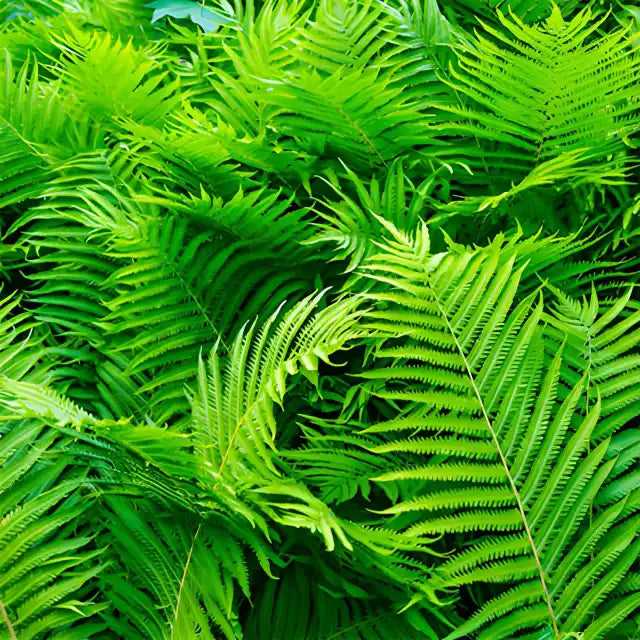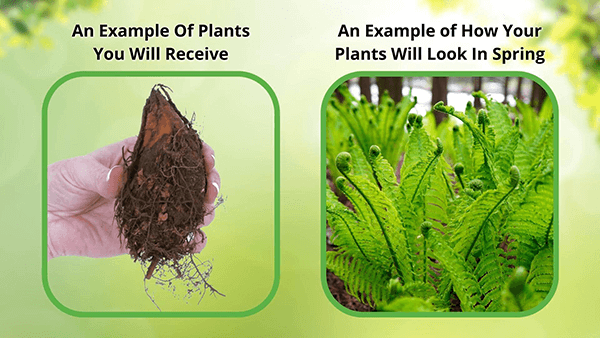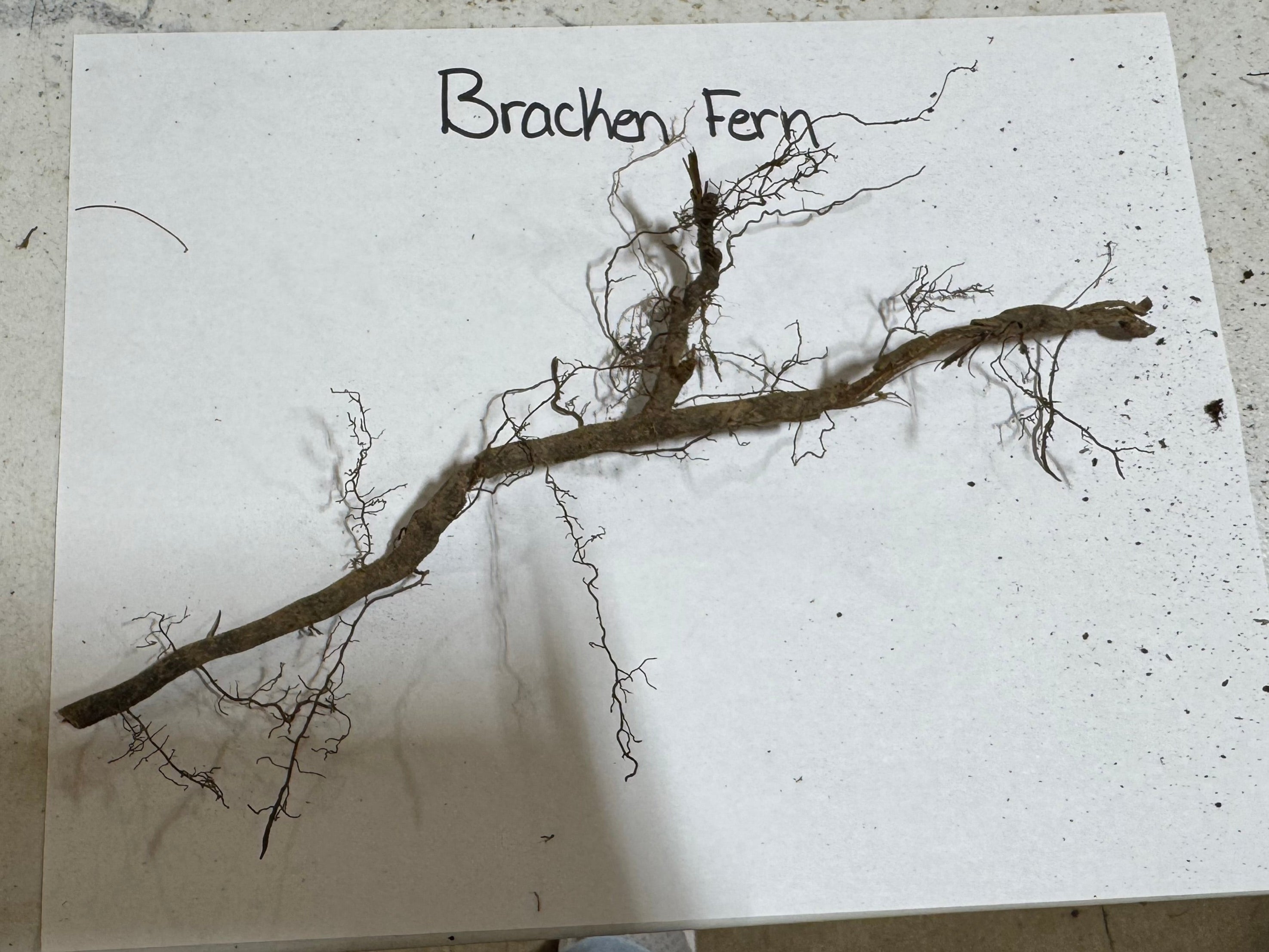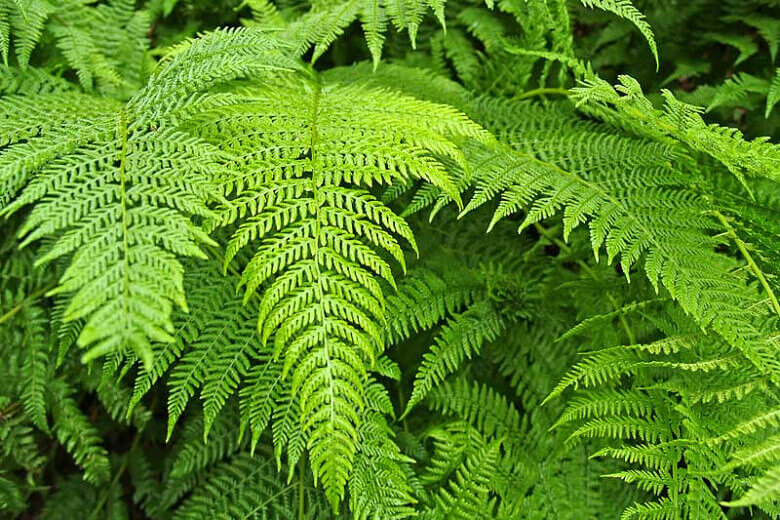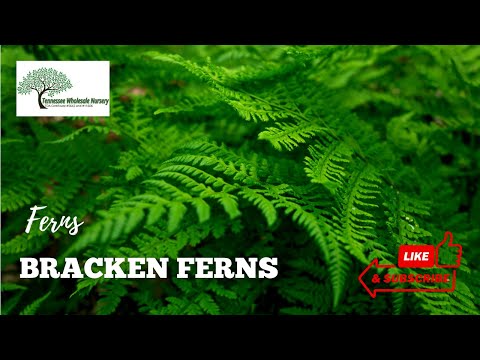Bracken Fern For Sale
The Bracken Fern (Pteridium aquilinum) is a vigorous grower and one of earth's most widely distributed ferns. It is native to many parts of the world, found naturally across woodland environments, and considered cosmopolitan. While many fern species are shade-loving, this familiar fern grows well in sunny to shady conditions, making it a helpful choice across many garden types.
It is a deciduous fern. After the first frost, it will recede to its rhizomatous form for the winter months. In the spring, it comes back to life with charming fiddleheads that emerge from the rhizome across the forest floor. Reaching up to 3 ft in length, its fronds are triangular and quite coarse and robust in appearance.
Bracken Fern Plant Details
Family: Dennstaedtiaceae
Hardiness Zones: USDA Zones 3–10
Light Requirement: Full Sun to Partial Shade. Grows well in a variety of light conditions
Water Needs: Low to moderate
Height: 2 - 5 ft
Spread: Up to 5 ft
Growth Rate: Fast
Bloom Time: NA
Flower Color: NA
Wildlife Value: Provides cover for ground-dwelling wildlife.
It is an aggressive grower and will spread quickly in the right environment, producing a rhizome up to 20 ft long. They will spread out into pastures and marginal areas easily, making it an ideal plant to use across a transitional garden space.
The Bracken Fern is not only a quick and efficient grower, but it also produces allelopathic compounds that reduce other plants' ability to grow around it, further giving this fern a competitive edge when expanding its colonies. For this reason, it may be considered weedy when growing in optimum conditions.
Landscape Uses and Maintenance
This fern is low maintenance, easy to grow, and virtually pest and disease-free. They prefer consistently moist, well-drained, peaty to sandy acidic soils. It is a robust fern and will also tolerate impoverished soils.
Bracken Fern prefers full sun to part shade, making it a versatile plant for a naturalized woodland area. Once established, this fern will withstand periods of drought, but not for long. Since it is a prolific spreader, it is best planted in an area where it can roam. Avoid planting in the garden, as it can form aggressive rhizomes that are difficult to control and remove.
Characteristics of Pteridium Fern
Fast growing, easy to maintain, grows in sunny to shady environments. This fern will provide a speedy ground cover to accompany your garden or woodland landscape, providing habitat for wildlife and visual appeal alike. Shop for the Bracken Fern online at TN Nursery. For 68 years, we have served the landscaping industry and homeowners with specimen plants.
Exposure
Bracken Fern thrives in partial to full shade, preferring indirect light. It can tolerate some direct sunlight but does best in more relaxed, shaded areas that remain moist and protected from harsh conditions.
Height at Maturity
Under 2 Feet
Usage
Shade Border Plants
Shipped As
Bare-root
Ships
USPS
Planting Zones
3-9
